One area I have always wanted to cover for you is the attitudes of western countries in the 1930s toward Jewish refugees fleeing Nazi Germany. Separately, one of our readers suggested I write about the British Mandate (ergo the blog title) and its background leading up to and including World War II. So, I decided to combine both topics since they overlapped one another.
The history of the British Mandate, or “Mandate for Palestine” from its inception to modern-day is very interesting but very complex (and its legacy evokes passionate emotions). I’m quite certain that I have likely failed to meet the expectations of our reader who probably desired a greater in-depth examination of the Mandate and for that, I apologize.
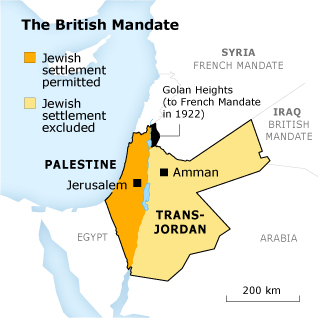
This is my attempt to frame an abbreviated history (albeit a “bird’s eye view”) of the role Palestine played within the context of Jewish refugees seeking a place to escape the Nazis. It is also about the unfortunate stance many countries took (including the United States) in turning away Jewish refugees due to political reasons as well as widespread anti-Semitism sentiments of politicians and citizens.
Did You Know?
Did you know that Queen Elizabeth II’s profile faces right on every coin she’s featured on? The tradition is to reverse the profile with each succeeding reigning monarch. So, going back to Queen Victoria, her profile faces left while her son, Edward VII (r. 1901-1910), faces right. His son, George V (r. 1910-1936), looks to the left, but his second son, George VI (r. 1936-1952) also faces to the left. Did George VI (Queen Elizabeth II’s father) break tradition? Not really. It was George V’s eldest son, Edward VIII who chose to break tradition and during his short reign of eleven months (he abdicated in December 1936), the coins were minted with his profile facing left. After the abdication, George VI took the view that his brother’s profile should have been to the right and as such, opted to continue the tradition by facing left. His daughter carried on the tradition and her profile is to the right.




With the recent death of Queen Elizabeth II and the ascension to the throne by her son, King Charles III, the British government is in the process of minting coins bearing the likeness of the new king. Which way will he face?
I’m sure His Majesty will gladly answer that question if you write him at Clarence House, London, SW1A 1BA.
(Reprinted from original blog, The Red Virgin, on 11 May 2019, click here to read.)
The British Mandate
In July 1922, the League of Nations authorized Great Britain with the “Mandate for Palestine,” or “Mandatory Palestine.” Recognizing the historical connection for the Jewish people with Palestine, the British were expected to facilitate the establishment of a new Jewish national homeland within what was once part of the Ottoman Empire. (After World War I, Britain obtained control of Mesopotamia, or modern-day Iraq along with Palestine, land that encompasses today’s Israel, Palestine, and Jordan.) British Mandate authorities granted the rights to the Jewish and Arab communities to run their own affairs. However, the Mandate failed the concept first set out by the League of Nations. Due largely to Arab opposition, two important issues or commitments were abandoned: immigration and land acquisition. Several British decrees during the 1930s severely restricted Jewish immigration and in 1940, the Land Transfer Regulations restricted Jews from acquiring land.
Click here to watch the video The British Mandate in Palestine.
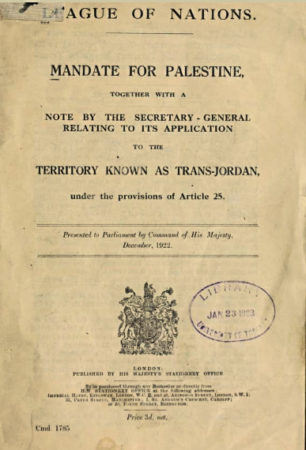
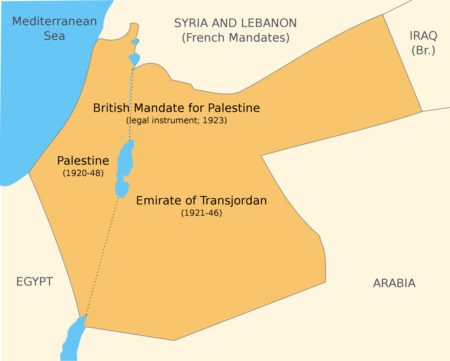
Prior to the League of Nations, the British government had supported the creation of a Jewish state through the Balfour Declaration. The Mandate was just one step in formalizing the eventual establishment of Israel. However, it wasn’t the Mandate but Zionism that drove the movement to create a Jewish homeland. As Jewish immigrants flowed into Palestine, on-going tensions between the Jews and Arabs accelerated with violent clashes and the creation of various Arab nationalist movements.
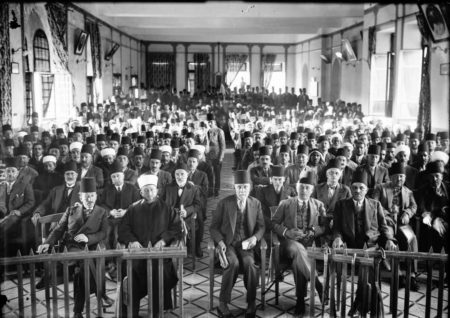
The Mandate existed throughout World War II but even as early as 1929, support in the U.K. was beginning to slip. Newspaper headlines declared, “Let Us Get Out of Palestine.” By 1946, Jordan was given its independence and Britain announced that on 14 May 1948, the “Mandate for Palestine” would be terminated. During the intervening years, the United Nations addressed the “Question of Palestine” by drafting a partition plan that was approved by the U.N. but opposed by the Arab countries. Within hours of the 14 May termination, the Israeli Declaration of Independence was issued. So, one goal of the British Mandate was obtained: the State of Israel was founded.
Click here to watch the video The Reestablishment of Israel on May 14, 1948.
JEWISH REFUGEES
For Jewish men, women, and children, the search for refuge from the Nazis became bookends to the Holocaust. Between 1933 and autumn of 1941, more than 340,000 Jews emigrated from Germany and Austria. (After 1941, the Nazis changed their “Jewish Solution” policy from one of forced emigration to extermination.) About one hundred thousand of these immigrants found refuge in countries that were subsequently occupied by Germany. Regrettably, most of them would perish in the Holocaust. After the war, most of the survivors never returned to Germany or Austria.
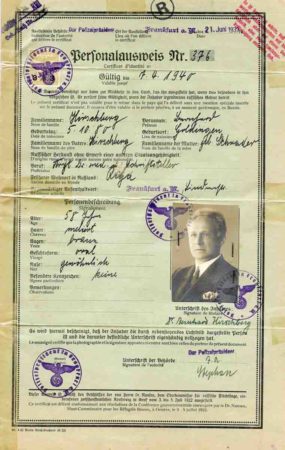
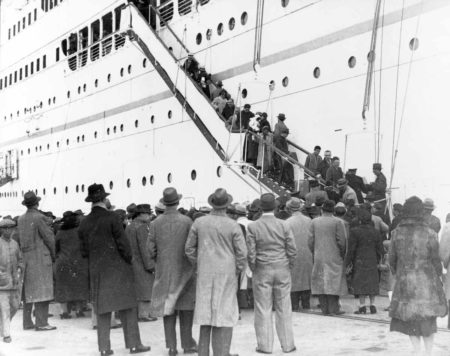
Despite the onset of the Nazi Nuremberg Laws in September 1935, German Jews still, for the most part, believed they were relatively safe. While Jewish immigration to America and other western European nations occurred during the first five years of Nazi rule, it was not until 1938 that the majority of Jews in Germany and Austria (Hitler annexed Austria in March 1938) began to plan their escape. If there were any lingering doubts by Jews who were “sitting on the fence,” the Kristallnacht pogrom of 9-10 November 1938 likely pushed them into making a decision to leave. Unfortunately for many, it was too late.
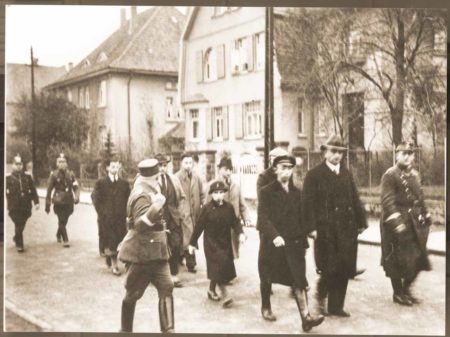

By the end of 1938, the United States and other potential sanctuary countries became worried about the influx of refugees and in particular, Jewish refugees. At the end of the year, 125,000 applicants were lining up outside U.S. consulate offices trying to obtain one of the 27,000 available visas (i.e., the existing quota). Within six months, more than 300,000 people were applying. Most of them were turned down as the refugee crisis increased and immigration restrictions were tightened.
Click here to watch the video Nazi Germany and the Jews Between 1933-1938.
M.S. St. Louis Incident
In May 1939, Hitler allowed 937 refugees (mostly Jewish) to board the German liner M.S. St. Louis in Hamburg, Germany with the intent to sail to Cuba where they could disembark. However, once there, the Cuban government refused to admit the passengers even though many of them had Cuban transit visas and landing certificates. The director of the Cuban immigration office was later forced to resign once it became known he had built a personal fortune by selling fraudulent landing certificates. However, the real reason was anti-Semitism on the part of both the Cuban and U.S. governments. There were anti-Jewish demonstrations in Havana before the ship was scheduled to dock. Roosevelt and his state department knew most of the passengers were going to wait in Cuba until they could enter the United States. The president’s secretary of the interior, Harold Ickes (1874−1952), was a strong supporter for Jewish immigration. (Hitler denounced Ickes in 1939 as a Jewish puppet.) Ickes tried to open the borders to the Jewish immigrants, but Roosevelt blocked him at every step.
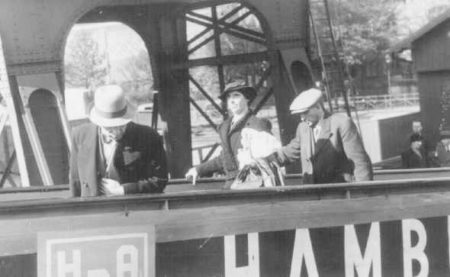
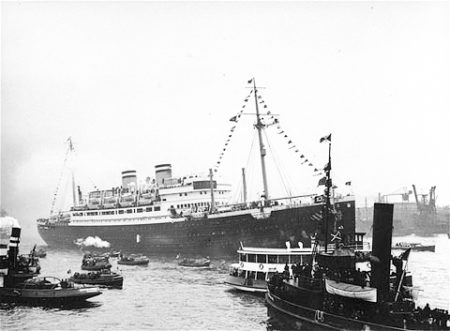
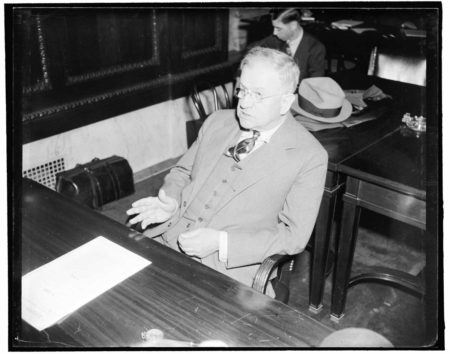
Sailing to Florida, the United States refused to allow the passengers to land while at the same time, Canada would not admit the refugees either. The state department stated the passengers must “await their turns on the waiting list and qualify for and obtain immigration visas before they may be admissible into the United States.” (In reality, Roosevelt was the U.S. State Department.) The problem was reported to be a two-year waiting list. The US Immigration and Nationality Act of 1924 severely limited the number of immigrants allowed to enter the United States and it was felt that issuing visas to the St. Louis passengers would be unfair to those who waited their turn on the list. Despite sympathy from the media and public, a majority of people supported the restrictive immigration policies. In fact, just three months before the St. Louis sailed, a congressional bi-partisan bill allowing 20,000 Jewish children to be admitted to America was never brought up for a vote.
In June 1939, the St. Louis sailed back to Europe. Nearly twenty-five percent of the passengers never survived the war.
Click here to watch the video The Tragedy of the Passengers of the MS St. Louis.
Click here to watch the video The Voyage of the St. Louis.
Herbert Karl Friedrich Bahr
We are familiar with President Roosevelt’s infamous decision in February 1942 to intern tens of thousands of Japanese Americans. However, a lesser-known story helps explain the decision by Roosevelt and the U.S. government to severely limit visas to refugees seeking asylum from the Nazis. During the summer of 1942, a ship from Sweden was carrying a 28-year-old German “refugee,” Herbert Karl Friedrich Bahr. The ship docked in New York City and during the interview process, the FBI determined Bahr was a Nazi Abwehr spy. The story of a spy disguised as a refugee quickly took over the newspaper headlines and Bahr’s trial was closely followed by the public. He was found guilty and lucky to receive a 30-year sentence rather than the death penalty.
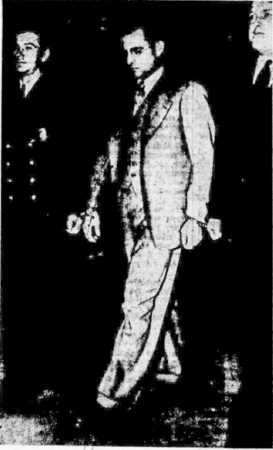
However, the case of Herbert Bahr left a legacy that produced the death penalty for many people. The concern about Nazi spies infiltrating the ranks of refugees created the belief that foreign refugees were a threat to national security. Not helping matters, the former ambassador to France, William Bullitt, had earlier told Roosevelt that the fall of France was due in part to Nazi spies. (click here to read the blog, The American Mayor of Paris) Despite anti-Semitism guiding their decisions to tighten immigration requirements and refusing entry, government officials also prevented entry to most foreigners regardless of religious belief.
Palestine
During the 1930s, more than sixty-thousand German Jews successfully immigrated to Palestine under the terms of the Haavara (Transfer) Agreement. This was an agreement between the German government and Jewish authorities in Palestine. Its main obstacle was Germany’s law banning the export of foreign currency. Jewish assets left in Germany would be disposed of with monies sent to Palestine through the export of German products. In May 1939, the British government approved a policy severely restricting Jewish entry into Palestine. These restrictions remained in place until May 1948 when the State of Israel was established. However, thousands of displaced Jews entered Palestine illegally for three years between the end of the war and the founding of Israel. (More than 50,000 displaced Jews trying to enter Palestine illegally were interned by the British in Cyprus detention camps.) For several years after Israel was established, more than 140,000 Holocaust survivors entered Israel.
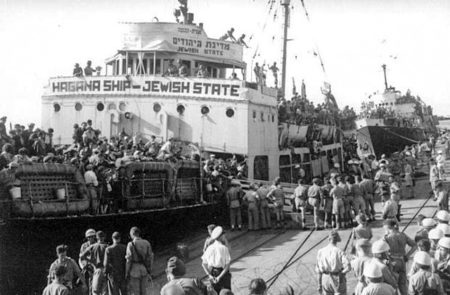
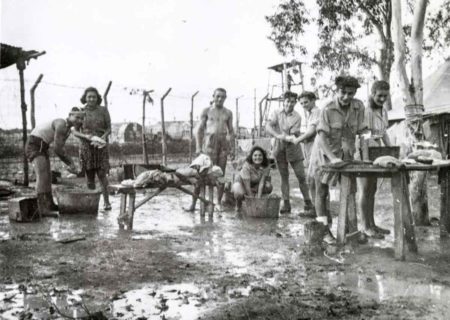
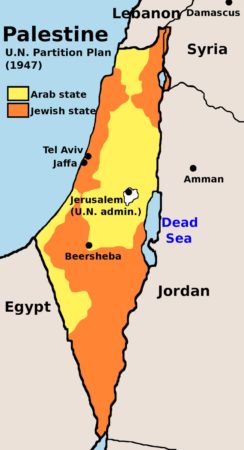
Post War
After the war, the United States and the international community recognized that Jewish refugees and displaced persons should be treated differently than immigrants who were moving from one country to another looking for a better standard of living. (Prior to the war, American immigration law did not differentiate between refugees forced to flee their countries due to persecution and immigrants seeking a better life.) Unfortunately, America did not establish a cohesive and comprehensive refugee policy after World War II. The government continued dealing with the problem on an ad hoc basis until 1980 when a defined procedure was established to conform with the United Nations Refugee Protocol of 1967.
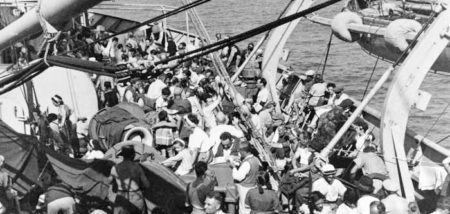
Next Blog: “The Ghost Army”
Correspondence and Commentary Policy
We welcome everyone to contact us either directly or through the individual blogs. Sandy and I review every piece of correspondence before it is approved to be published on the blog site as well as sending a personal response. Our policy is to accept and publish comments that do not project hate, political positions, religious stances, or an attempt to solicit business (yeah, believe it or not, we do get all kinds of this stuff). Like many bloggers, we receive quite a bit of what is considered “Spam.” Those e-mails are immediately rejected without discussion.
Our blogs are written to inform our readers about history. We want to ensure discussions are kept within the boundary of factual historical context without personal bias or prejudice. Hopefully everyone’s opinions are formed based on factual information.
This year, we are averaging about one e-mail every two days from our readers. We appreciate all communication because in many cases, it has led to friendships around the world.
✭ Learn More About the British Mandate and Jewish Refugees
Baumel, Judith Tydor. Unfulfilled Promise: Rescue and Resettlement of Jewish Refugee Children in the United States, 1934−1945. Juneau, AK: Denali Press, 1990.
Burns, Ken (Director) and Lynn Novick (Director). The U.S. and the Holocaust. Produced by Florentine Films and WETA Washington, D.C., 2022.
Charles River Editors. The Voyage of the St. Louis: The History and Legacy of the Fateful Attempt to Resettle Jewish Refugees Before World War II and the Holocaust. CreateSpace Independent Publishing Platform, 2017.
Gelber, Yoav. Palestine 1948: War, Escape and the Emergence of the Palestinian Refugee Problem. Chicago: Sussex Academic Press, 2001.
Gilbert, Martin. Israel: A History. Australia: Turnerbooks, 1998.
Laqueur, Walter. Generation Exodus: The Fate of Young Jewish Refugees from Nazi Germany. Hanover, NH: Brandeis University Press, 2001.
Leebaert, Derek. FDR, the State Department and U.S. Holocaust Failures. Wall Street Journal. Opinion Letters, 25 September 2022. Click here to read the article.
Rabinowitz, Dorothy. The U.S. and Holocaust: Review. Wall Street Journal, 14 September 2022. Click here to read the article.
Segev, Tom. Translated by Haim Watzman. One Palestine, Complete: Jews and Arabs Under the British Mandate. London: Henry Holt and Company, 2000.
Stein, Kenneth W. The Land Question in Palestine, 1917−1939. Chapel Hill: University of North Carolina Press, 1987.
Disclaimer:
There may be a chance that after we publish this particular blog, the video links associated with the blog are no longer accessible. We have no control over this. Many times, whoever posts the video has done so without the consent of the video’s owner. In some cases, it is likely that the content is deemed unsuitable by YouTube. We apologize if you have tried to access the link and you don’t get the expected results. Same goes for internet links.
What’s New With Sandy and Stew?
First of all, we would like to thank all of you who contacted us in regard to our status after Hurricane Ian hit Southwest Florida and in particular, Punta Gorda. We are very lucky not to have sustained the damage other parts of the state experienced. Most of our damage was vegetation related and we will likely lose most of our trees. However, the devastation outside our little community was severe. We think Punta Gorda was spared (relatively speaking) because the eye of the hurricane went directly over us and because the eye was forty miles in diameter, cities such as Venice and Fort Myers took the brunt of the eyewall winds. The mobilization of first responders has been nothing short of incredible. Thousands of trucks and men and women were on the move early Thursday morning (we watched them arrive). I guess our politicians and emergency agencies have learned a thing or two from past weather-related disasters. We can’t say “Thank you” enough times to these folks for getting our basic services up and running as quickly as they did as well as supporting those in need of shelter, food, and water. It will take years for our communities to recover from this hurricane.
So, other than hosting our guest Ian, Sandy and I have been getting ready for our two-week trip on the ms Rotterdam for its 150th anniversary of the first transatlantic crossing of the original Rotterdam. (We sail on the exact date that in 1872, the steamship left Rotterdam for New York City carrying eighty passengers, tulip bulbs, and Dutch gin.) Our ship will be the seventh incarnation of the Rotterdam.
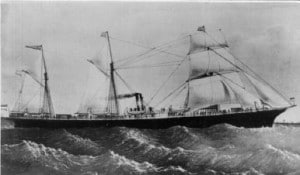
As you can imagine, there will be a lot of sea days on this voyage. Now, Sandy and I have never been people to sit around. We normally use these “down” days to make some headway toward finishing our books. So, the game plan is to finish the first rough draft of volume two of Where Did They Put the Gestapo Headquarters? There really isn’t too much left to do. This means we’ll have the opportunity to get a bulk of content written for the third and last volume of the Nazi-occupation books. After we return in early November, I’ll let you know how much we accomplished. At that point, I’ll have a better idea of a projected time frame for publishing volume two (likely early second quarter 2023).
Thank you to all of you who subscribe to our bi-weekly blogs. It seems there isn’t a day that goes by where we don’t increase our readership. Please let your history buff friends and family members know about our blog site and blogs.
Someone Is Commenting On Our Blogs
I’d like to thank Danek M. for commenting on our blog, The Naked Heroine (click here to read the blog). Danek’s mother, Giga, was a prisoner of KZ Ravensbrück for about four years (and yes, she did survive). Giga befriended Lydia (“Cipinka”) while at the camp and they remained friends after the war. Giga was one of the women evacuated in the spring 1945 to Sweden under the White Buses program (click here to read the blog, The White Buses). We will attempt to introduce Danek to another reader, Jean who is Lydia’s father’s godson. Additionally, Roger R. is doing research in Sweden right now and we’ll see about introducing him to Danek.
Finally, a thank you to our reader who contacted me about writing a blog on the British Mandate. I apologize again for not covering many of the points you mentioned. Unfortunately, I have limited space and I wanted to wrap the story around the efforts and fates of Jewish refugees.
If there is a topic you’d like to see a blog written about, please don’t hesitate to contact me. I love hearing from you so keep those comments coming.
Share This:
Follow Stew:
Find Stew’s books on Amazon and Apple Books.
Please note that we do not and will not take compensation from individuals or companies mentioned or promoted in the blogs.
 Walks Through History
Walks Through History
Copyright © 2022 Stew Ross

What happened to Herbert Bahr ? Did he serve his full 30 year sentence ? Where did he live out the rest of his life ? Can’t find any info on internet.
Hi Dave; Thanks for your question. Frankly, I can’t find anything on Bahr past 1946 when he reportedly testified at a war crimes trial. Sorry I couldn’t be of more help. If you do find out something, please let me know. STEW